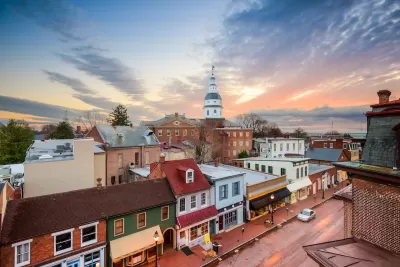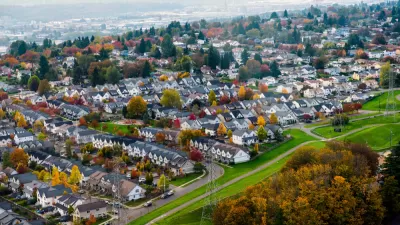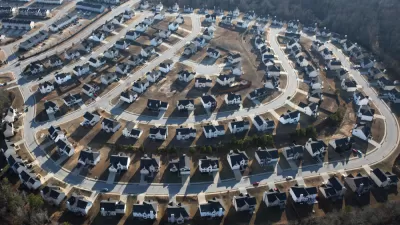How the rigidity of modern suburban development fails to prepare cities for the future.

Drawing on his experience in Annapolis, Maryland, Edward Erfurt highlights how older cities make better use of space than suburban developments. In Annapolis, Erfurt writes, “The city evolved organically, filling in nooks and crannies with buildings and spaces that adapted to the existing topography and ownership patterns.”
According to Erfurt, Annapolis is a city full of “irregularly shaped lots and buildings” that are squeezed into nooks and crannies to maximize the use of space. The result is a uniquely charming — and functional — urban landscape.
Suburban development, on the other hand, “is rigid, designed to be ‘complete’ upon construction with little expectation for future growth or change.” It also wastes resources by duplicating infrastructure, such as roads, that go largely underused. For Erfurt, “By building to a "finished state," suburban developments sacrifice the possibility of future expansion and adaptability.”
Erfurt offers some examples of ‘nook and cranny urbanism’ that could make modern cities more adaptable and diverse. These include “Positioning buildings closer to the street or corners of lots,” “Placing utilities strategically along future corridors” to reduce the cost of future development, and “Designing flexible parking layouts” that allow for future redevelopment of parking lots. Changes like these could yield a more “productive and sustainable model” for city planning that actively prepares for future change and growth.
FULL STORY: Nook and Cranny Urbanism: How To Maximize Every Inch of Space

Alabama: Trump Terminates Settlements for Black Communities Harmed By Raw Sewage
Trump deemed the landmark civil rights agreement “illegal DEI and environmental justice policy.”

Study: Maui’s Plan to Convert Vacation Rentals to Long-Term Housing Could Cause Nearly $1 Billion Economic Loss
The plan would reduce visitor accommodation by 25% resulting in 1,900 jobs lost.

Planetizen Federal Action Tracker
A weekly monitor of how Trump’s orders and actions are impacting planners and planning in America.

Wind Energy on the Rise Despite Federal Policy Reversal
The Trump administration is revoking federal support for renewable energy, but demand for new projects continues unabated.

Passengers Flock to Caltrain After Electrification
The new electric trains are running faster and more reliably, leading to strong ridership growth on the Bay Area rail system.

Texas Churches Rally Behind ‘Yes in God’s Back Yard’ Legislation
Religious leaders want the state to reduce zoning regulations to streamline leasing church-owned land to housing developers.
Urban Design for Planners 1: Software Tools
This six-course series explores essential urban design concepts using open source software and equips planners with the tools they need to participate fully in the urban design process.
Planning for Universal Design
Learn the tools for implementing Universal Design in planning regulations.
Caltrans
Smith Gee Studio
Institute for Housing and Urban Development Studies (IHS)
City of Grandview
Harvard GSD Executive Education
Toledo-Lucas County Plan Commissions
Salt Lake City
NYU Wagner Graduate School of Public Service





























